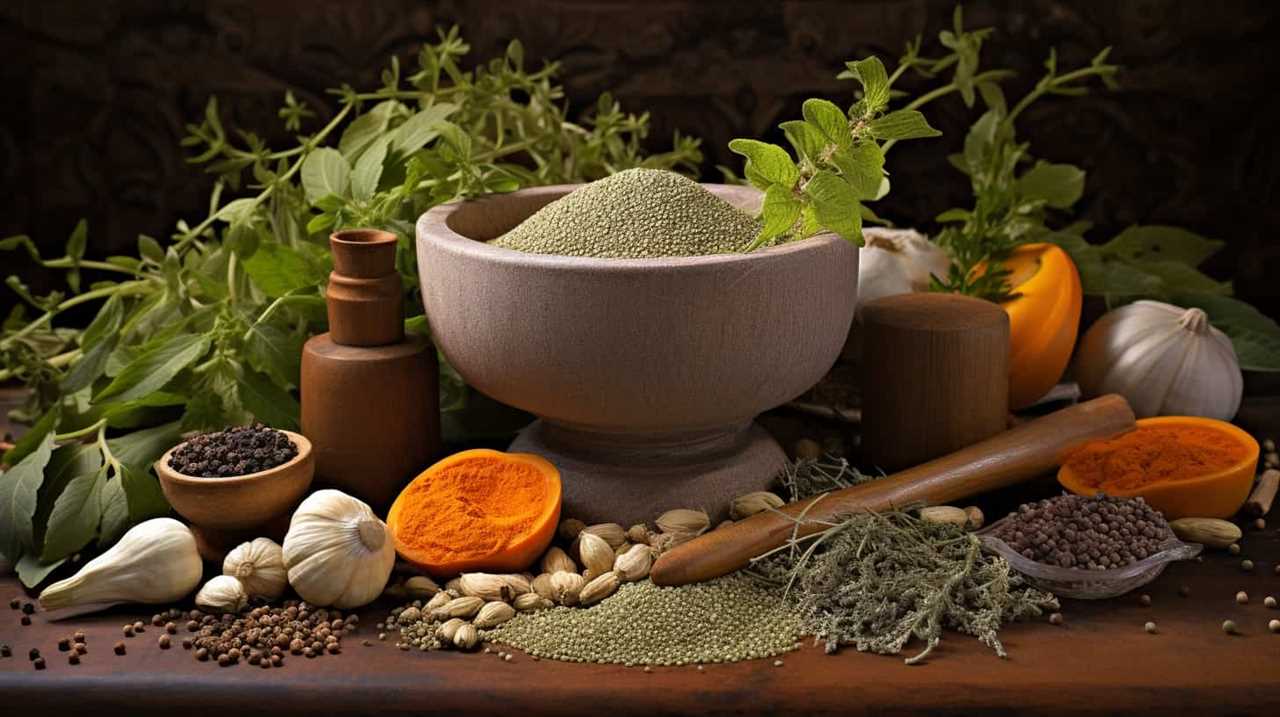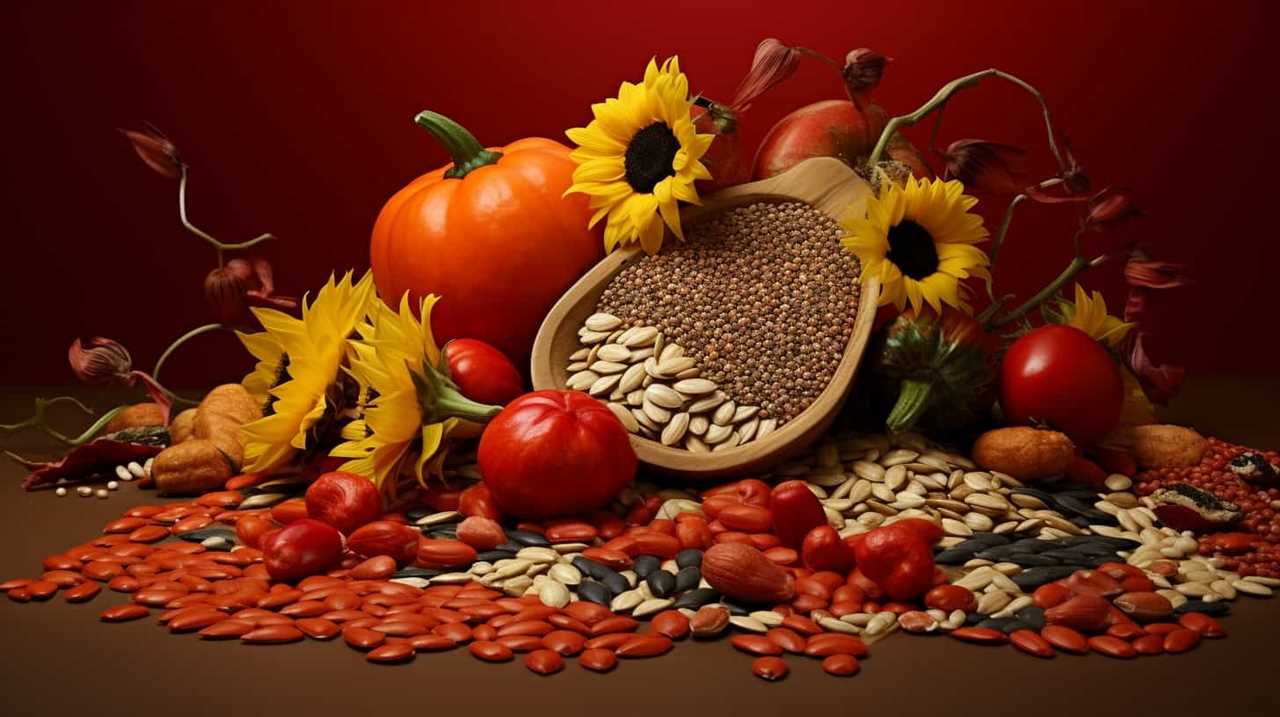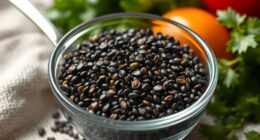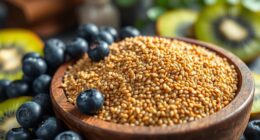As we delve into the mysteries of ancient civilizations, a thought-provoking question arises: what was the significance of chia seeds in their culture? These tiny yet powerful seeds were more than just a trend in modern health; they held cultural significance and played a vital role in the diets of ancient societies.
We’ll explore the nutritional benefits, ancient remedies, and healing properties that made chia seeds a staple in their daily lives. Join us on this journey of discovery as we uncover the secrets behind the ancient civilizations’ utilization of chia seeds.
Key Takeaways
- Chia seeds were actively incorporated into ancient civilizations’ diets, serving as a staple food source.
- Chia seeds had cultural and religious significance, symbolizing fertility, abundance, and strength.
- Chia seeds provided essential nutrients, sustained energy, and healing properties, making them valuable for warriors, athletes, and overall health.
- Chia seeds continue to be cherished today for their culinary versatility, nutritional value, and increased awareness of their benefits.
Ancient Civilizations and Chia Seeds
Ancient civilizations actively incorporated chia seeds into their diets for their numerous health benefits and nutritional value. Archaeological evidence of chia seed use has been found in ancient Mesoamerican civilizations such as the Aztecs and Mayans.
These civilizations recognized the value of chia seeds as a source of sustainable energy, essential nutrients, and medicinal properties. Chia seeds weren’t only consumed by the local population but also served as a trade commodity, highlighting their significance in ancient societies.

The seeds were highly valued and often used as offerings in religious ceremonies. They were also exchanged as a form of currency, demonstrating their economic importance.
The widespread use and trade of chia seeds in ancient civilizations highlight their cultural, economic, and nutritional significance.
Cultural Significance of Chia Seeds
As we delve into the cultural significance of chia seeds, it becomes apparent that their incorporation into ancient civilizations was driven by their symbolic and practical value. Chia seeds held a prominent place in the culinary traditions of these civilizations, being used in a variety of dishes and beverages. The seeds weren’t only nutritious but also provided a delightful crunch and nutty flavor.
Additionally, chia seeds played a significant role in religious rituals, symbolizing fertility, abundance, and spiritual connection. The versatility of chia seeds made them a valuable ingredient in offerings, ceremonies, and sacrifices. Their small size and long shelf life also made them practical for use in religious practices.
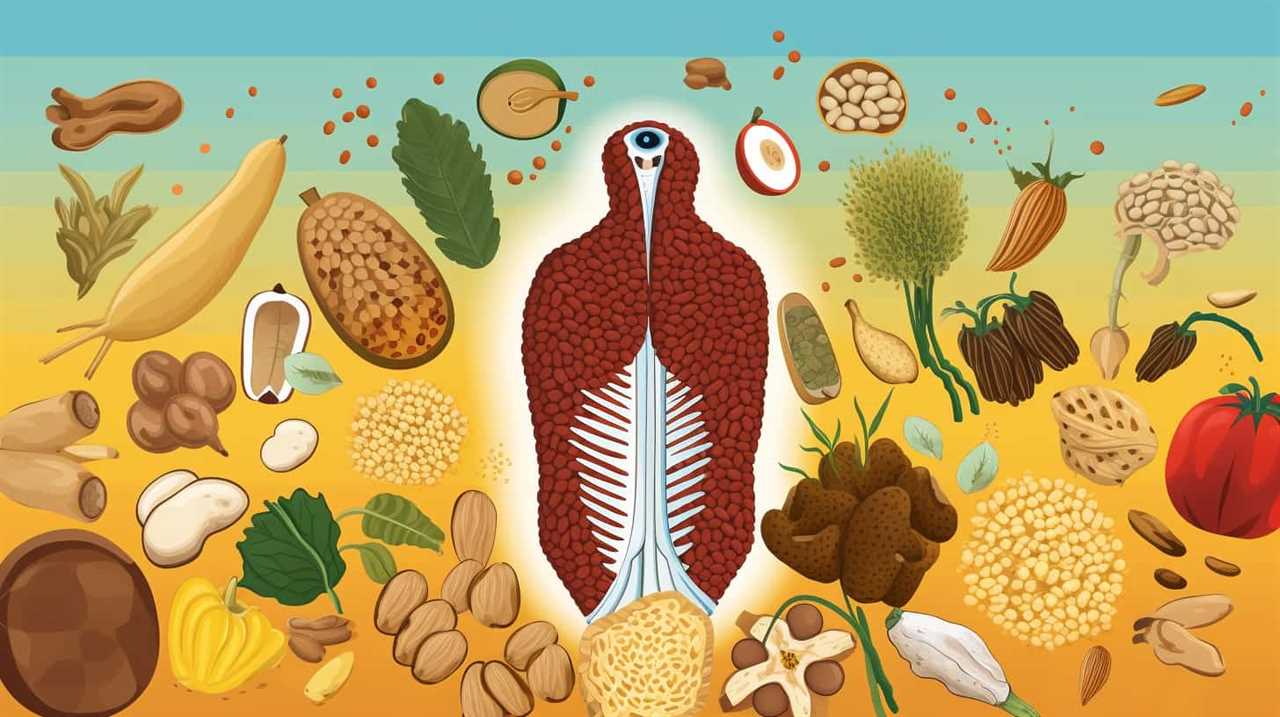
With their rich cultural history, it’s no wonder that chia seeds continue to be cherished today for their culinary and spiritual significance.
Transitioning into the subsequent section, let’s now explore the nutritional benefits of chia seeds in ancient times.
Nutritional Benefits of Chia Seeds in Ancient Times
Moving forward, let’s explore the nutritional advantages of incorporating chia seeds in ancient civilizations. Chia seeds were considered a superfood in ancient times, providing a wide range of health benefits. Here are three reasons why chia seeds were highly valued for their nutritional properties:
- Rich in nutrients: Chia seeds are packed with essential nutrients such as omega-3 fatty acids, fiber, protein, calcium, and antioxidants. These nutrients helped to support overall health and vitality in ancient societies.
- Sustained energy: Chia seeds were consumed by warriors and athletes due to their ability to provide sustained energy. The combination of protein, healthy fats, and fiber in chia seeds helped to fuel the body and maintain stamina.
- Spiritual significance: Chia seeds played a role in ancient rituals and ceremonies, symbolizing abundance, fertility, and strength. They were believed to possess spiritual properties that connected individuals with higher realms.
With their remarkable nutritional profile and spiritual significance, chia seeds were an essential part of ancient civilizations.
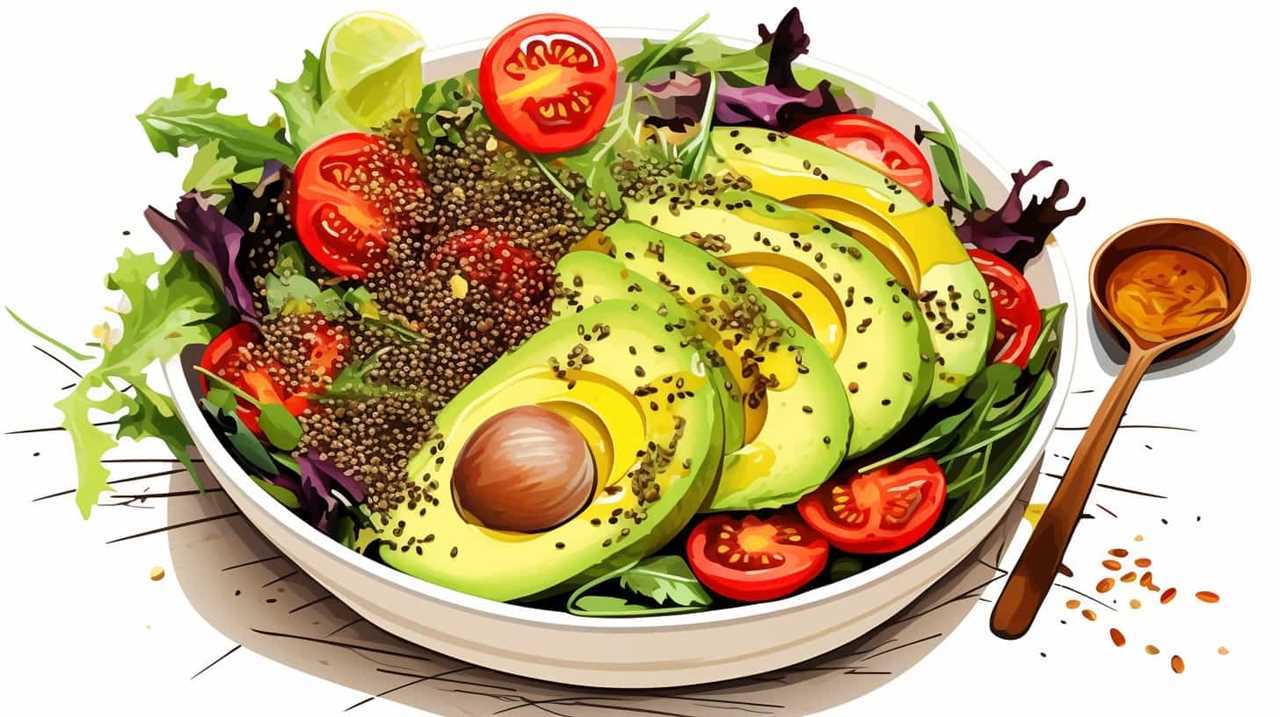
As we delve deeper into the topic, let’s now explore the ancient remedies and healing properties of chia seeds.
Ancient Remedies and Healing Properties of Chia Seeds
After exploring the nutritional benefits of chia seeds in ancient civilizations, it is important to delve into the ancient remedies and healing properties associated with these remarkable seeds. Chia seeds have long been used in ancient herbal remedies and holistic healing practices.
To better understand the healing properties of chia seeds, let’s take a look at the following table:
| Healing Properties | Description | Benefits |
|---|---|---|
| Anti-inflammatory | Reduces inflammation in the body | Helps relieve joint pain and swelling |
| Antioxidant | Fights free radicals and oxidative stress | Supports overall health and wellbeing |
| Digestive Aid | Promotes healthy digestion | Helps alleviate constipation and bloating |
| Energy Booster | Provides sustained energy | Enhances physical and mental performance |
| Skin Health Support | Nourishes and hydrates the skin | Improves skin elasticity and appearance |
These healing properties of chia seeds demonstrate why they were highly valued in ancient civilizations for their ability to promote overall wellness and address various health concerns.
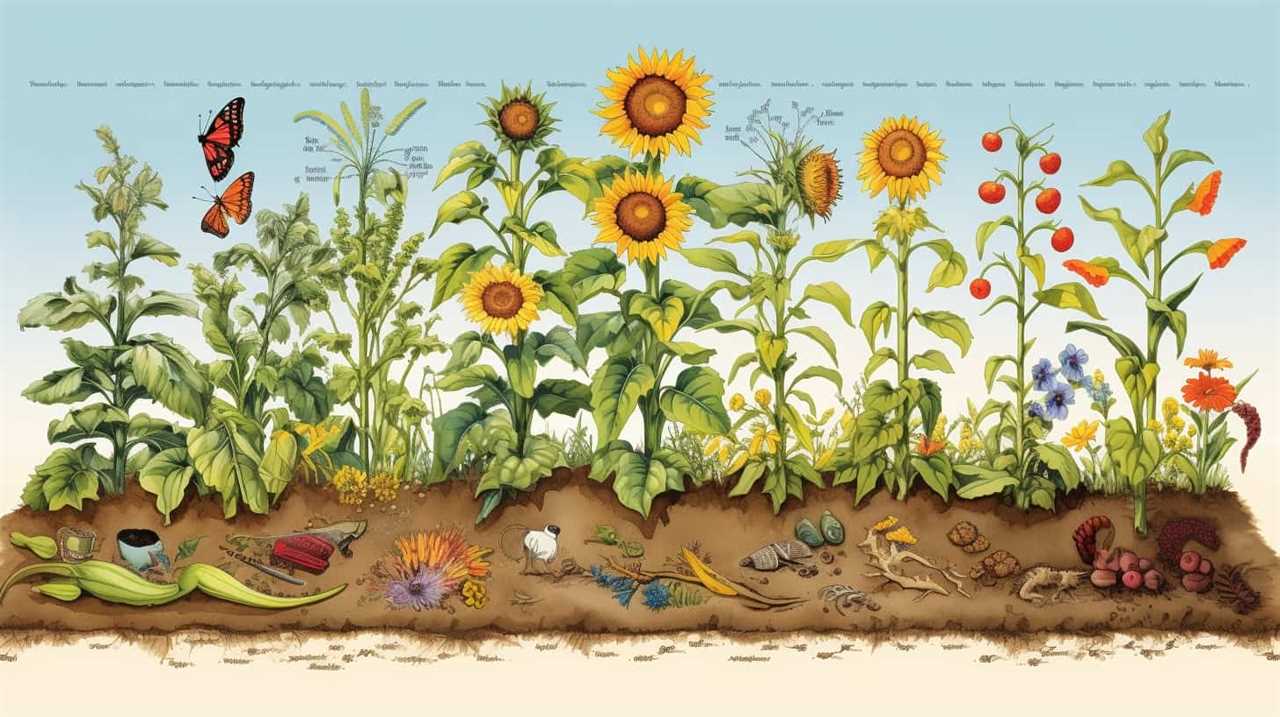
Transitioning into the subsequent section about chia seeds as a staple in ancient diets, it is evident that their nutritional and healing properties made them an essential part of daily life in ancient times.
Chia Seeds as a Staple in Ancient Diets
Continuing our exploration of the nutritional and healing benefits of chia seeds, it’s worth noting that ancient civilizations frequently incorporated these seeds into their diets as a staple food source. The inclusion of chia seeds in their daily meals wasn’t only due to their abundance and accessibility but also because of their profound impact on health and well-being.
Here are three reasons why chia seeds became a dietary staple for ancient civilizations:
- Ancient farming techniques: The cultivation of chia seeds was practiced by ancient civilizations who understood the importance of sustainable agriculture. They developed innovative farming techniques that allowed for the mass production of chia seeds, ensuring a reliable food source for their communities.
- Nutritional value: Chia seeds are packed with essential nutrients like omega-3 fatty acids, fiber, protein, and antioxidants. These nutrients provided ancient civilizations with the energy and nourishment needed for their physically demanding lifestyles.
- Chia seeds in religious rituals: Chia seeds held religious significance for many ancient civilizations. They were often used in rituals and ceremonies, symbolizing fertility, abundance, and spiritual connection.
Frequently Asked Questions
How Are Chia Seeds Grown and Harvested in Modern Times?
Chia seeds cultivation in modern times involves advanced farming techniques. We grow and harvest chia seeds with care, using sustainable practices. Our objective is to produce high-quality seeds that serve the needs of our customers.
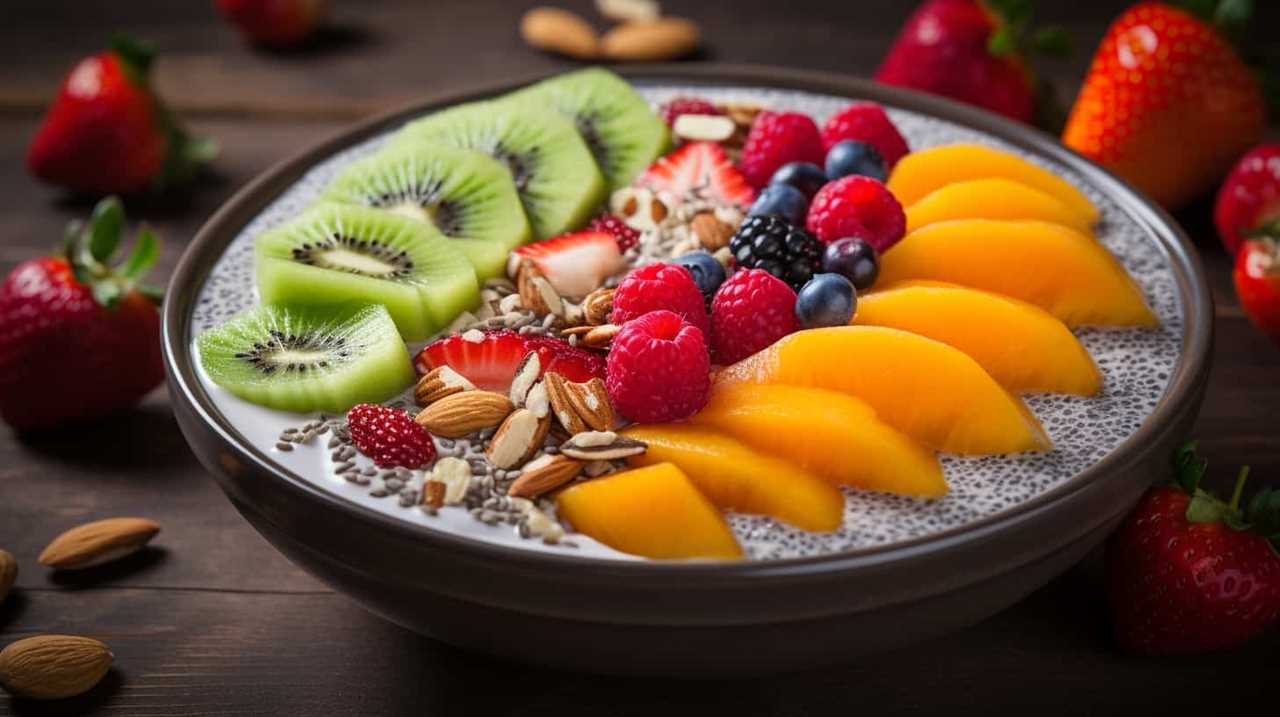
What Are Some Common Uses of Chia Seeds in Modern Cuisine?
In modern cuisine, we love using chia seeds for their nutritional benefits. They add a healthy dose of omega-3 fatty acids, fiber, and antioxidants to our meals. From smoothies to puddings, chia seed recipes are versatile and delicious.
Are There Any Side Effects or Precautions to Consider When Consuming Chia Seeds?
When consuming chia seeds, it is important to consider potential side effects and take precautions. Some side effects may include digestive issues, allergies, and interactions with certain medications. It is advisable to consult a healthcare professional before incorporating chia seeds into your diet.
How Were Chia Seeds Traded and Transported Between Ancient Civilizations?
Chia seeds were traded and transported along established trade routes between ancient civilizations. Our research suggests that these routes facilitated the exchange of not only chia seeds but also knowledge of ancient civilizations’ chia seed recipes.
What Are Some Alternative Natural Remedies Used by Ancient Civilizations Besides Chia Seeds?
Herbal remedies were widely used in traditional medicine by ancient civilizations. They sought alternative natural remedies, like herbs and plants, to treat various ailments and promote overall health and well-being.
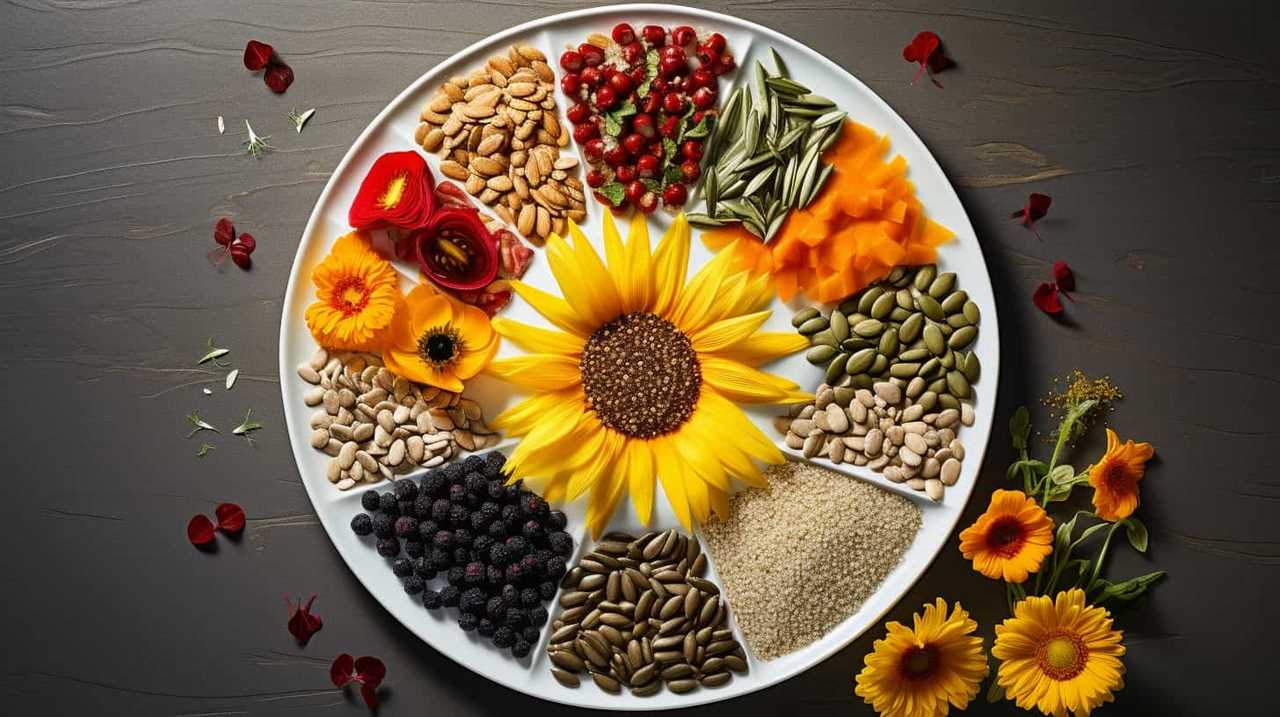
Conclusion
In conclusion, it becomes evident that ancient civilizations utilized chia seeds for their cultural significance, nutritional benefits, healing properties, and as a staple in their diets.
These tiny seeds were treasured for their ability to provide sustenance and improve overall health.
The utilization of chia seeds showcases the wisdom and foresight of these ancient cultures, who recognized the value of this superfood long before modern science confirmed its benefits.
Truly, chia seeds were a gift from the past that continues to enrich our present.
